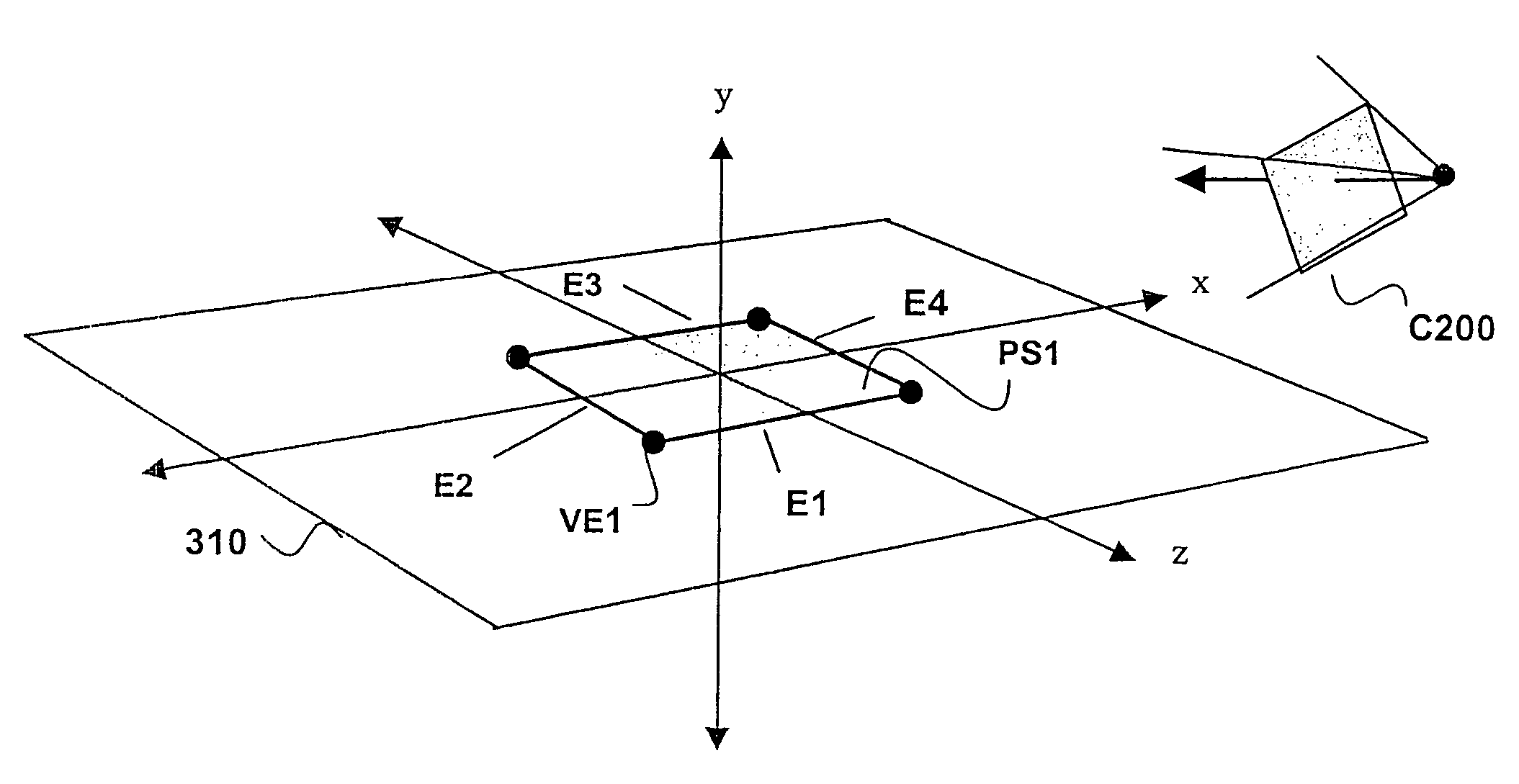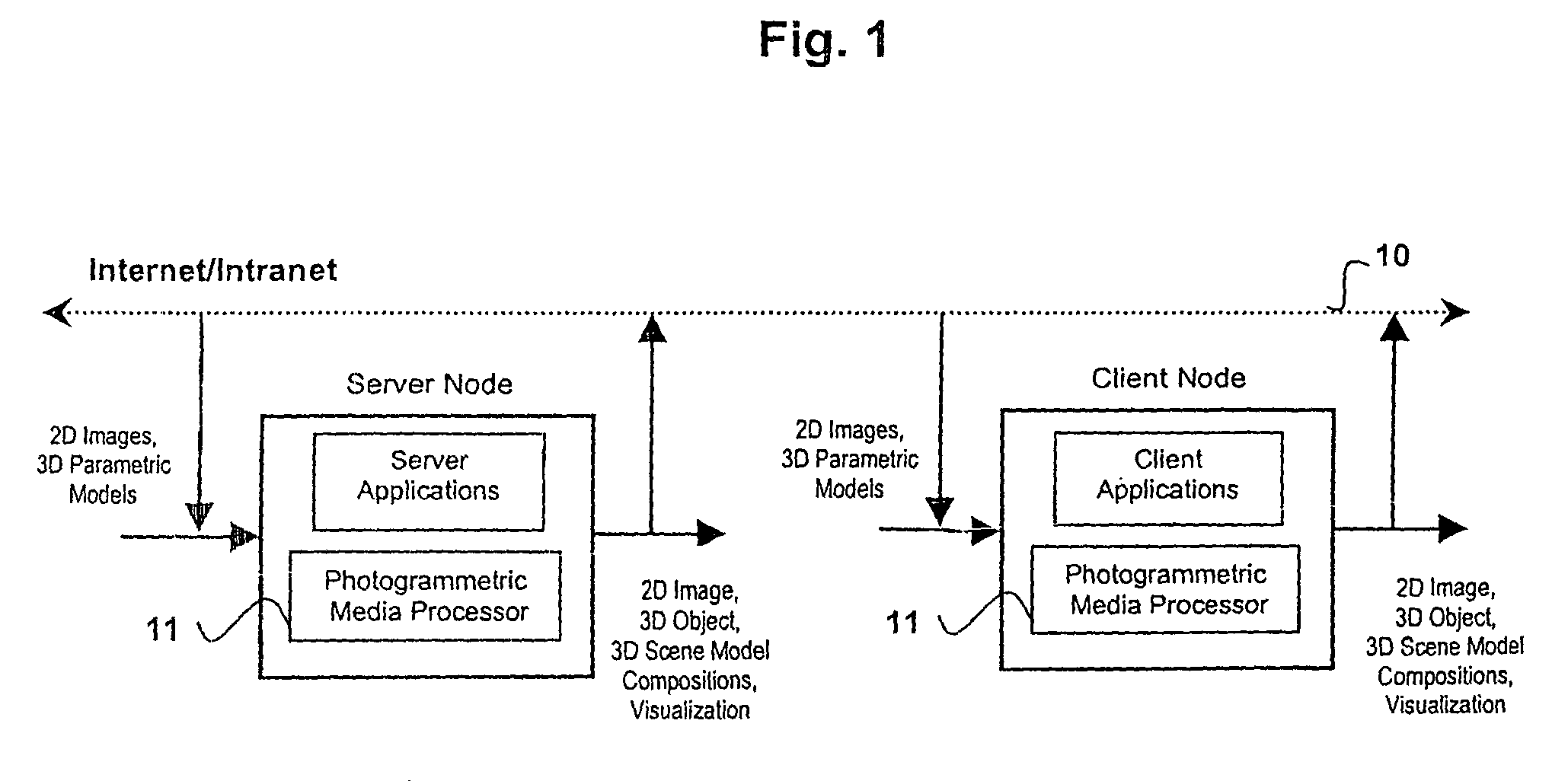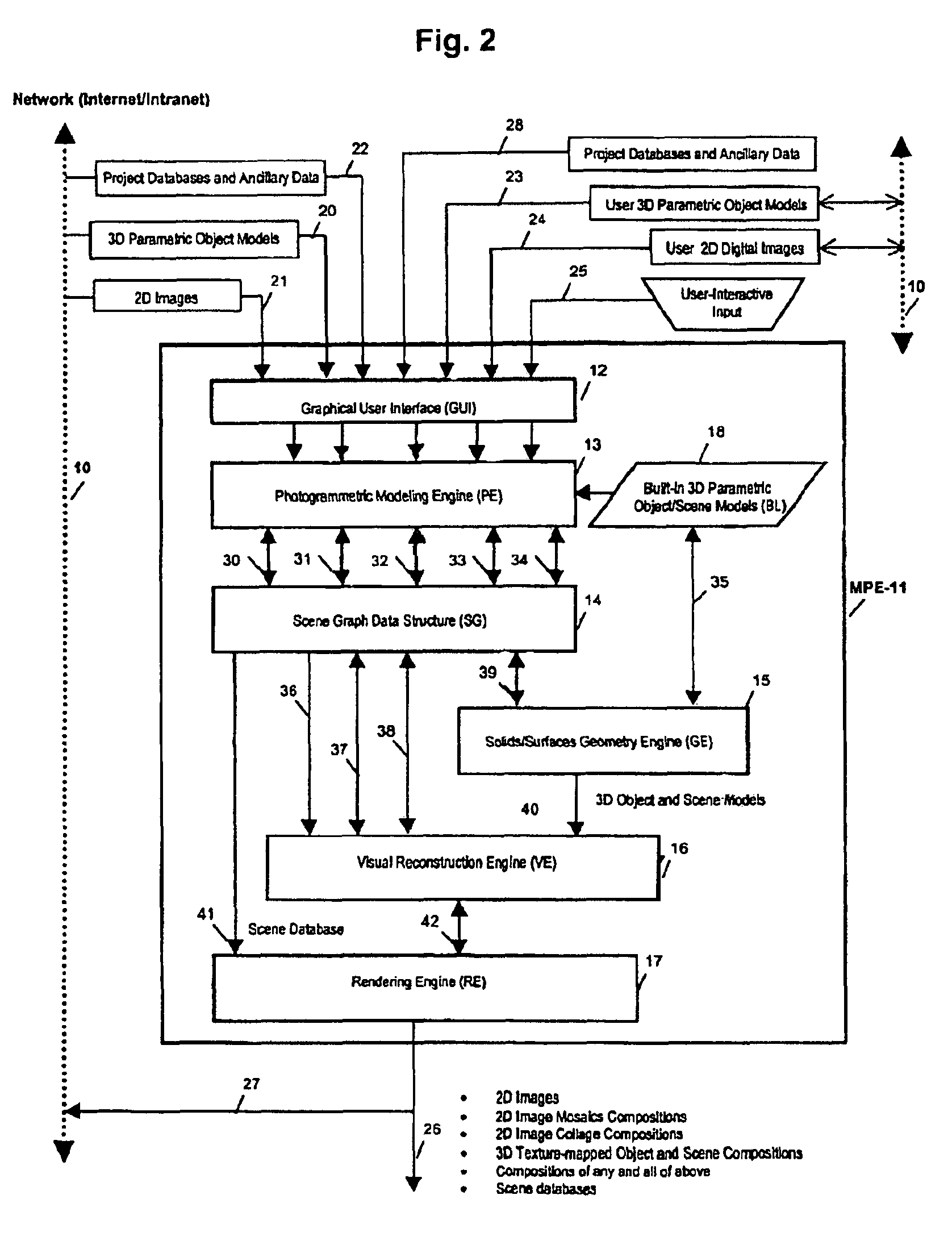Photogrammetry engine for model construction
a model construction and photogrammetry technology, applied in the field of parametric solid modelers, can solve the problems of inability to achieve the desired level of geometric accuracy. , the current approach and the available tools cannot achieve the desired level of geometric accuracy, etc., to achieve the effect of reducing the difficulty of achieving the effect of realism
- Summary
- Abstract
- Description
- Claims
- Application Information
AI Technical Summary
Problems solved by technology
Method used
Image
Examples
example 1
[0313]A home furnishings merchant displays items for sale at its e-commerce web site on Internet 10. The site is enabled with the merchandising system as a SELL server node SN200. Displayed at the merchant site is the rug item depicted as image I500 of FIG. 28.
[0314]An online Internet shopper visits the merchant SELL site with interest in purchasing the rug. From the merchant site the shopper selects an option to visualize the rug in her home. This selection launches the download of a merchant-tailored client-side version of media processing engine 11 software S-PROG from the merchant SELL site to the shopper computer system on network 10. This transaction enables the shopper as a SHOP node with media processing engine 11 software components C-PROG.
[0315]The shopper seeks to visualize rug I500 in her living room depicted in FIG. 18(a) image I200. The shopper acquires image I200 with a digital camera and downloads it as user data 24. For a wider field-of-view of the living room scene...
example 2
[0319]The shopper of Example 1 wants to interactively simulate placement of the rug in various positions on the floor within the living room scene. The shopper employs the system 3D scene construction mode.
[0320]The previously described process flow of FIG. 39, with the integration of “rug” object of FIG. 28 image I500 within scene I200 of FIG. 18(a) and “true-to-scale” object insertion of FIG. 40, is executed. In her living room, the shopper measures the distance between the back wall of the room and the marble fireplace base as well as the combined width of the two right French doors. The shopper aligns PC graphic PG1 as shown in FIG. 18(c) image I200 and enters the measured values for the width and length parameters of PC structure PS20. The scene construction becomes calibrated to the true dimensions of the shopper's living room.
[0321]To place the rug on the floor of the room, the shopper selects point VF5 on the rug in image I500 and anchor point 933 on the floor in image. The ...
example 3
[0322]A shopper of home furnishings visits a merchant e-commerce web site on network 10. The merchant-site is enabled as a SELL server node SN200. The shopper selects an option at the merchant site to visualize products in his home. This selection launches the download of a merchant-tailored media processing engine 11 software S-PROG from the merchant SELL site to the shoppers' computer system on network 10. This transaction enables the shopper as a SHOP node CN100 with media processing engine 11 software C-PROG.
[0323]Displayed at the merchant site is pine storage box 91 depicted in FIG. 44 image I901. The shopper selects image I901 and the SELL node transfers an IOP and an IDP for the product to the shopper SHOP node. The IOP transferred contains the product scene graph, geometric structures, camera models, texture map imagery, and parametric shape and function parameters. The IDP contains graphic information display PUP3-30.
[0324]The shopper visits web site of another merchant on ...
PUM
 Login to View More
Login to View More Abstract
Description
Claims
Application Information
 Login to View More
Login to View More - R&D
- Intellectual Property
- Life Sciences
- Materials
- Tech Scout
- Unparalleled Data Quality
- Higher Quality Content
- 60% Fewer Hallucinations
Browse by: Latest US Patents, China's latest patents, Technical Efficacy Thesaurus, Application Domain, Technology Topic, Popular Technical Reports.
© 2025 PatSnap. All rights reserved.Legal|Privacy policy|Modern Slavery Act Transparency Statement|Sitemap|About US| Contact US: help@patsnap.com



